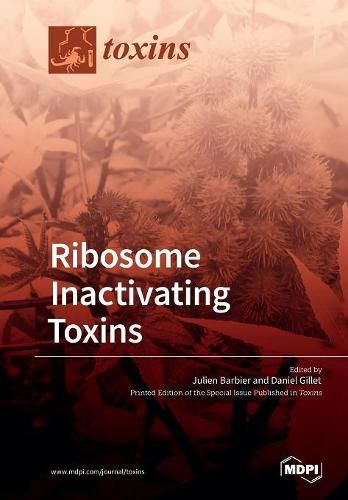Readings Newsletter
Become a Readings Member to make your shopping experience even easier.
Sign in or sign up for free!
You’re not far away from qualifying for FREE standard shipping within Australia
You’ve qualified for FREE standard shipping within Australia
The cart is loading…






This title is printed to order. This book may have been self-published. If so, we cannot guarantee the quality of the content. In the main most books will have gone through the editing process however some may not. We therefore suggest that you be aware of this before ordering this book. If in doubt check either the author or publisher’s details as we are unable to accept any returns unless they are faulty. Please contact us if you have any questions.
Ribosome inactivating proteins (RIPs) form a vast family of hundreds of toxins from plants, fungi, algae and bacteria. RIP activities have also been detected in animal tissues. They target a single adenine of a ribosomal RNA, thereby blocking protein synthesis and leading intoxicated cells to apoptosis. The role of plant RIPs may be related to plant defense against predators and viruses, plant senescence or bacterial pathogenesis. Most RIPs are no threat to human or animal health. However, several bacterial RIPs are major virulence factors involved in severe epidemic diseases such as dysentery or the hemolytic uremic syndrome that may occur in patients suffering from Shiga toxin-producing entero-hemorrhagic Escherichia coli infection. Several plant RIPs such as ricin toxin, abrin or sarcin have been, or may be involved in accidental or criminal poisonings, political intimidation or bio-suicides. Health crisis, biosafety and biosecurity issues became a major concern and many efforts are made to develop treatments. Finally, RIPs can be engineered into immunotoxins to destroy cancer cells or cells chronically infected by viruses.
This book presents the most recent data on all aspects of RIPs including function, diversity and evolution, mechanism, pathophysiology, medical countermeasures and engineering into anticancer drugs.
$9.00 standard shipping within Australia
FREE standard shipping within Australia for orders over $100.00
Express & International shipping calculated at checkout
This title is printed to order. This book may have been self-published. If so, we cannot guarantee the quality of the content. In the main most books will have gone through the editing process however some may not. We therefore suggest that you be aware of this before ordering this book. If in doubt check either the author or publisher’s details as we are unable to accept any returns unless they are faulty. Please contact us if you have any questions.
Ribosome inactivating proteins (RIPs) form a vast family of hundreds of toxins from plants, fungi, algae and bacteria. RIP activities have also been detected in animal tissues. They target a single adenine of a ribosomal RNA, thereby blocking protein synthesis and leading intoxicated cells to apoptosis. The role of plant RIPs may be related to plant defense against predators and viruses, plant senescence or bacterial pathogenesis. Most RIPs are no threat to human or animal health. However, several bacterial RIPs are major virulence factors involved in severe epidemic diseases such as dysentery or the hemolytic uremic syndrome that may occur in patients suffering from Shiga toxin-producing entero-hemorrhagic Escherichia coli infection. Several plant RIPs such as ricin toxin, abrin or sarcin have been, or may be involved in accidental or criminal poisonings, political intimidation or bio-suicides. Health crisis, biosafety and biosecurity issues became a major concern and many efforts are made to develop treatments. Finally, RIPs can be engineered into immunotoxins to destroy cancer cells or cells chronically infected by viruses.
This book presents the most recent data on all aspects of RIPs including function, diversity and evolution, mechanism, pathophysiology, medical countermeasures and engineering into anticancer drugs.